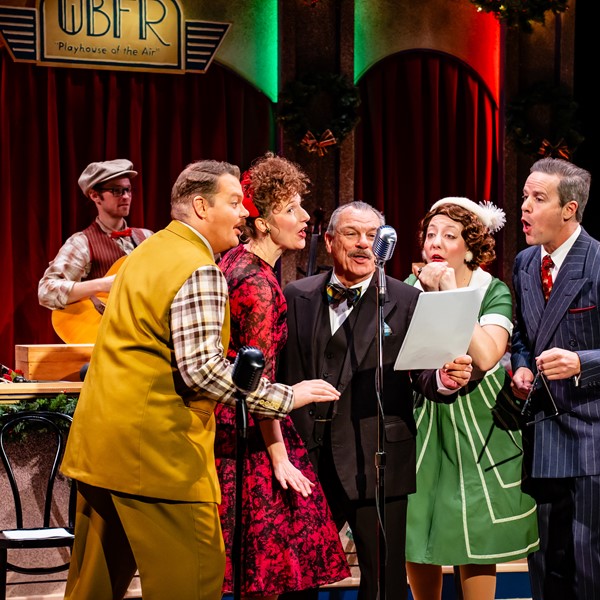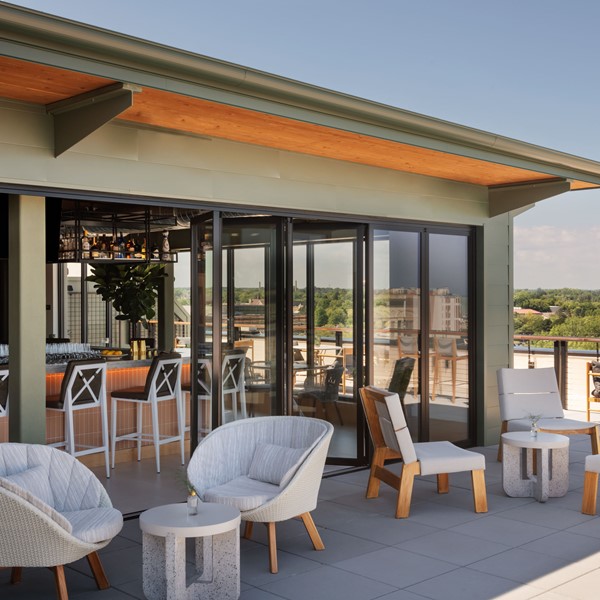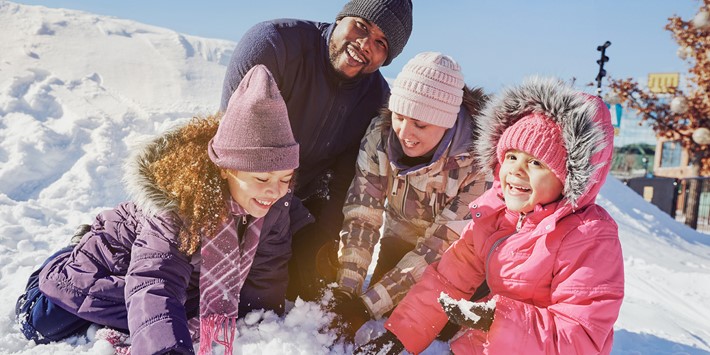
Know Before You Go: Winter in Wisconsin
If you’re new to Wisconsin, you might think winter is the season to stay inside and cozy up to the fireplace with besties, a book or a mug of hot cocoa. To be sure, you can find plenty of that here, but the outdoorsy nature of the Badger State is as strong as ever, even when the snow falls and the season offers a chance to experience Wisconsin in a new way. Here are a few things you should know in order to make the most of this magical season.
Let it Snow
Weather varies from year to year, but most of Wisconsin gets about 40-50 inches of snow each season. We also have what is called the Lake Superior Snowbelt–the region from the Apostle Islands and Bayfield Peninsula curving along the south shore into the Hurley area, where “lake effect” snow can produce 100 to 150 inches a year. This reliable abundance supports snowmobiling, skiing and other sports, and kids of every age will have ample opportunity to make snow angels together.
Lakes Freeze Over
By late December, you can usually expect most Wisconsin lakes to freeze over entirely – as in, you can walk on them, with ice thick enough to support ice shanties (see ice fishing!).
And that sometimes includes the Great Lakes! Lake Superior freezes to some extent (but rarely, all the way across), and when it is thick enough, the Ice Highway opens up, a two-mile path marked by a row of Christmas trees for vehicles traveling between Bayfield and Madeline Island. Ice conditions there are monitored by local authorities, but one should always exercise good judgment and play it safe.
Watch for Book Across the Bay, a ski and snowshoe race across the ice of Chequamegon Bay between Ashland and Washburn.
In Madison, get together with friends and family and watch as kiteboarders often strap on snowboards and sail across the frozen lakes! You can also find icy fun at the Frozen Assets Festival that includes ice skating, hockey, a polar plunge and more.
Winter’s For the Birds
When the rivers in Wisconsin freeze, it’s time to go eagle watching! Each winter, large numbers of eagles gather to fish in areas of open water, such as beneath river dams. The Wisconsin River near Sauk City and Prairie du Sac is one of the most reliable places for this, and in mid-January, the cities celebrate Bald Eagle Watching Days, where you and your crew can watch the birds fish the river and learn from local eagle experts.
Another impressive feathered visitor is the Snowy Owl, more and more common in Wisconsin’s open fields, and sure to create a buzz among birders on social media. Stay warm with your friends in the car, as it makes a great bird blind.
Ice Caves and Frozen Waterfalls
Along the sandstone cliffs of the Apostle Islands National Lakeshore are dazzling ice cave formations, a natural wonder drawing visitors from all over the world. Lake ice stability must be just right, so the park office keeps updates on ice cave conditions. If it’s not a go for you and your crew, other icy formations can also be found. Explore the nearby Red Cliff ice caves also on Lake Superior, or head to stunning Cave Point in Door County for a reliable show-stopper. And even more memories can be made inland at Wisconsin’s majestic frozen waterfalls.
Trail Groomers
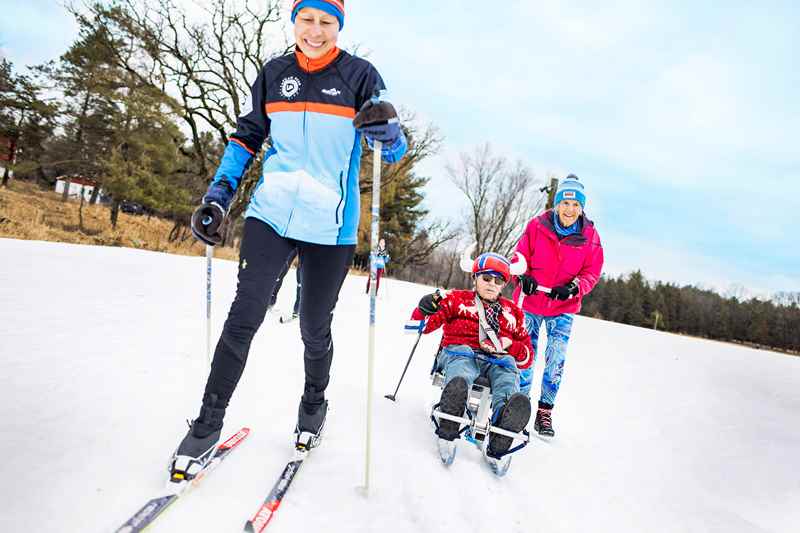
Think of them as winter trail angels! These groups of volunteers look after the snowy surfaces of trails designated for cross-country skiing and snowmobiling. In some cases, such as Lapham Peak Unit of the Kettle Moraine State Forest, the Friends of Lapham Peak not only manage lighting for night skiing, they also raise funds to provide snowmaking when Mother Nature fails to deliver. Lapham Peak also offers cross-country sit skis available to use for free, so that winter adventurers with mobility impairments can explore trails in the snowy season.
Remember, if you and your friends hit the trails for snowshoeing or hiking, you should stick to ungroomed trails. Check the Wisconsin Snow Report for current conditions throughout Wisconsin, or search local trail pages for specific regulations.
Ice Arts
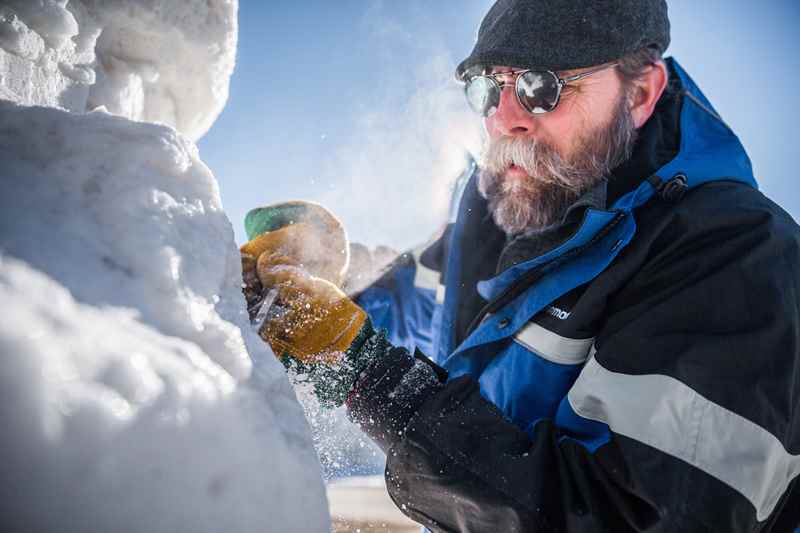
To discover magical man-made winter art, round up your team and visit a snow and ice sculpture competition. Lake Geneva hosts the only national snow-sculpting competition, but other communities also invite teams to compete at winter festivals throughout the state, including Wausau, Mount Horeb, Lake Superior, Sturgeon Bay and more!
Skiing
Nordic and cross-country ski trails abound in Wisconsin, many of them regularly groomed and rated from novice to expert. In fact, Wisconsin is home to the largest cross-country ski event in North America: the Slumberland American Birkibeiner, known as the “Birkie”.
Wisconsin is also home to numerous thrilling downhill ski runs. Granite Peak Ski Area near Wausau is the state’s largest, but there are several other destinations for skiing, snowboarding, sledding and tubing, many with snack shacks perfect for warming up and refueling with friends after the outdoor fun. Ski lessons are often available, and with so many runs for different skill levels, there’s guaranteed fun for the whole family.
Go Winter Camping and Ski by Candlelight
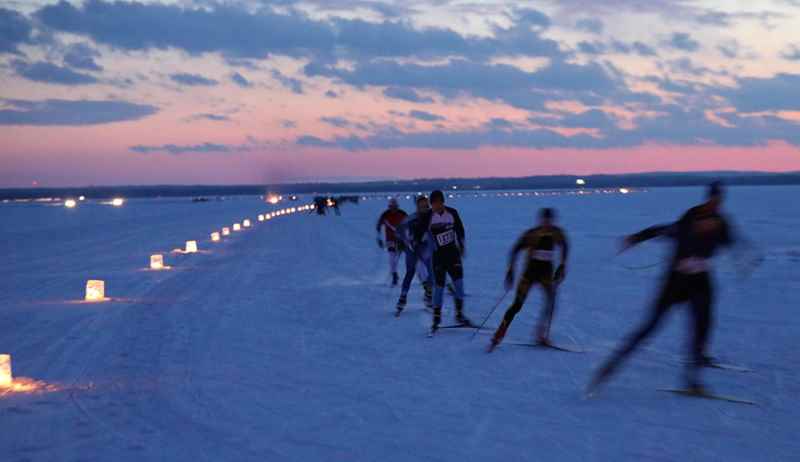
Some Wisconsin state parks offer winter camping as a unique opportunity to soak up refreshing winter scenery. Popular areas include the Chequamegon-Nicolet National Forest with its miles of groomed trails and Kettle Moraine State Forest with its rolling hills left over from the Ice Age. Find tips for planning a peaceful winter getaway and cross this Wisconsin adventure off your bucket list.
A ski or snowshoe hike lit by ice lanterns – candleholders fashioned from ice – is another unforgettable experience, and several parks – such as Governor Thompson State Park – host such events in January and February. After these whimsical outings with friends, you'll never look at winter the same way again. Search our directory to find illuminating events near you.
Explore more winter fun – check out 10 things to do this winter in Wisconsin.





